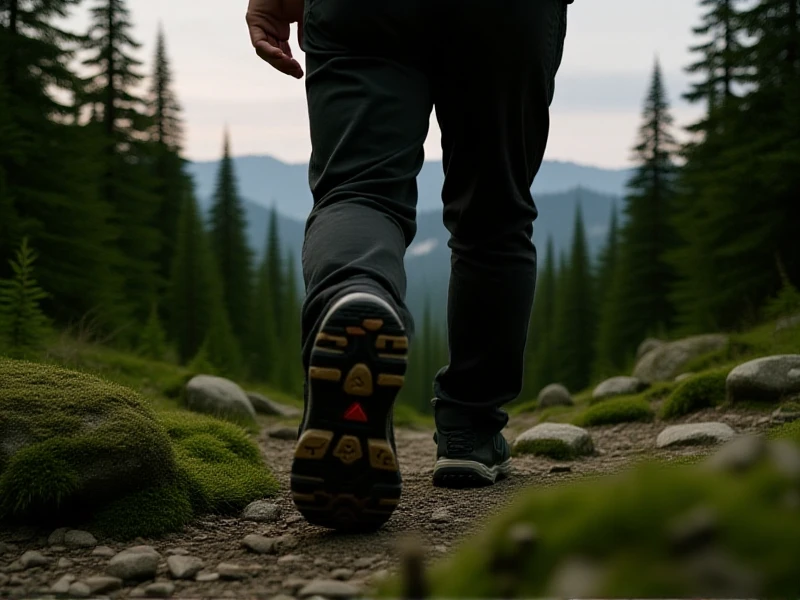Find Your Perfect Fit: The Ultimate Hiking Shoes Guide

Prompt Response:
Tired of sore feet and blisters ruining your hike? Investing in the right pair of hiking shoes is the cornerstone of enjoyable, safe trail adventures. Whether you're tackling well-groomed paths or scrambling over rocky terrain, your footwear makes all the difference. Let's explore why quality hiking shoes are essential and how to choose yours.
Why Good Hiking Shoes Matter (Beyond Comfort)
Think of your hiking shoes as trusted companions. They do more than keep your feet dry. Proper trail footwear delivers critical benefits:
- Unwavering Stability: Rugged soles and supportive midsoles provide a secure platform on uneven surfaces like loose rocks, roots, and slippery slopes, significantly reducing the risk of painful ankle rolls.
- Serious Traction: Dedicated outsoles utilize aggressive lugs designed to bite deep into soft ground, grip rocky surfaces, and maintain purchase on muddy or wet trails, preventing slips and falls. Vibram® rubber is a common standard for reliable grip.
- Essential Protection: Reinforced toes protect against stubs, durable uppers fend off scratches, and rock plates embedded in some models shield your soles from bruising on sharp terrain.
- Crucial Support: Adequate arch and heel support minimizes foot fatigue over miles, preventing pain and allowing you to hike stronger for longer. This support also helps distribute weight effectively.
Key Hiking Shoe Features to Prioritize
When browsing for hiking shoes, consider these critical elements:
- Fit is Supreme: This is non-negotiable. Your toes must have wiggle room (about a thumbnail's width) without allowing the heel to slip. Visit an outdoor store for professional fitting later in the day when your feet are slightly swollen, like on the trail. Wear hiking socks! Poor fit is the top cause of blisters and misery.
- Support Level: Assess your needs.
- Low-Cut (Hiking Shoes): Offer agility and lighter weight, great for day hikes with lighter packs and less technical terrain.
- Mid-Cut (Hiking Boots): Provide excellent ankle support and stability, ideal for heavier packs, rougher trails, or those needing extra joint security. Often more durable.
- Waterproofing (Like Gore-Tex®): Essential if you traverse wet grass, streams, mud, or hike in damp climates. They keep feet dry. Know that waterproof hiking shoes breathe less than non-waterproof versions. For very hot, dry conditions, non-waterproof, very breathable mesh shoes can be cooler and dry faster if wet.
- Outsole Performance: Look for deep, multi-directional lugs made of tough rubber. Vibram® is renowned, but other brands offer great alternatives. The lug pattern should suit the terrain (e.g., self-cleaning lugs prevent mud buildup).
- Midsole Cushioning & Support: This absorbs shock and provides structure. EVA foam is common and responsive. Paid attention to sufficient arch support matching your foot type.
Choosing Your Pair: Terrain & Load
- Day Hikes / Light Trails: Lighter low-cut hiking shoes or trail runners offer comfort and speed.
- Moderate/Backpacking (Midweight Pack): Mid-cut boots offer the extra support needed under a heavier load (~25-40 lbs) and better ankle protection on uneven ground.
- Technical/Rough Terrain/Heavy Pack: Sturdy mid to high-cut boots provide maximum stability, protection, and support essential for carrying significant weight over challenging routes or multi-day trips.
Popular & Proven Choices (Illustrative Examples)
- Merrell Moab: A perennial favorite for day hikers and moderate trails. Known for comfort, reliable traction (Vibram sole), good durability, and comes in waterproof (GTX) versions. Great "all-arounder" hiking shoe.
- Salomon X Ultra/Quest: Known for agility (EnergyCell™ midsole), secure fit (SensiFit™), and excellent traction on varied terrain (Contagrip® rubber). Popular with fast hikers and approach shoes.
- Oboz Sawtooth: Celebrated for outstanding arch support and stability (SetGuide® insoles and O Fit™), durability, and solid, grippy outsoles. A top choice for those prioritizing support.
Seasonal Hiking Shoe Tips
- Summer: Prioritize breathability! Choose lightweight mesh uppers (perhaps non-waterproof versions) and shoes with good draining to prevent sweaty feet or quick drying if crossing water. Socks made of merino wool or synthetic fibers manage moisture best.
- Spring/Fall/Winter: Waterproofing becomes paramount. Look for Gore-Tex® (or similar) liners and robust outsoles capable of gripping wet rocks and mud. Consider hiking boots with higher ankle collars for deeper puddles or snow.
Your Next Step
Don't just grab any shoe; invest time in finding your perfect pair of hiking shoes. Visit reputable outdoor retailers like REI, Moosejaw, or a local outfitter. Explain the trails you explore (e.g., day hikes near Sulphur Springs, weekend backpacking in Yosemite). Try on multiple top brands and models with the socks you'll actually hike in. Walk around the store, test them on an incline board if available. Your feet (and adventure enjoyment) will thank you for skipping the pain and embracing confident strides on every trail.